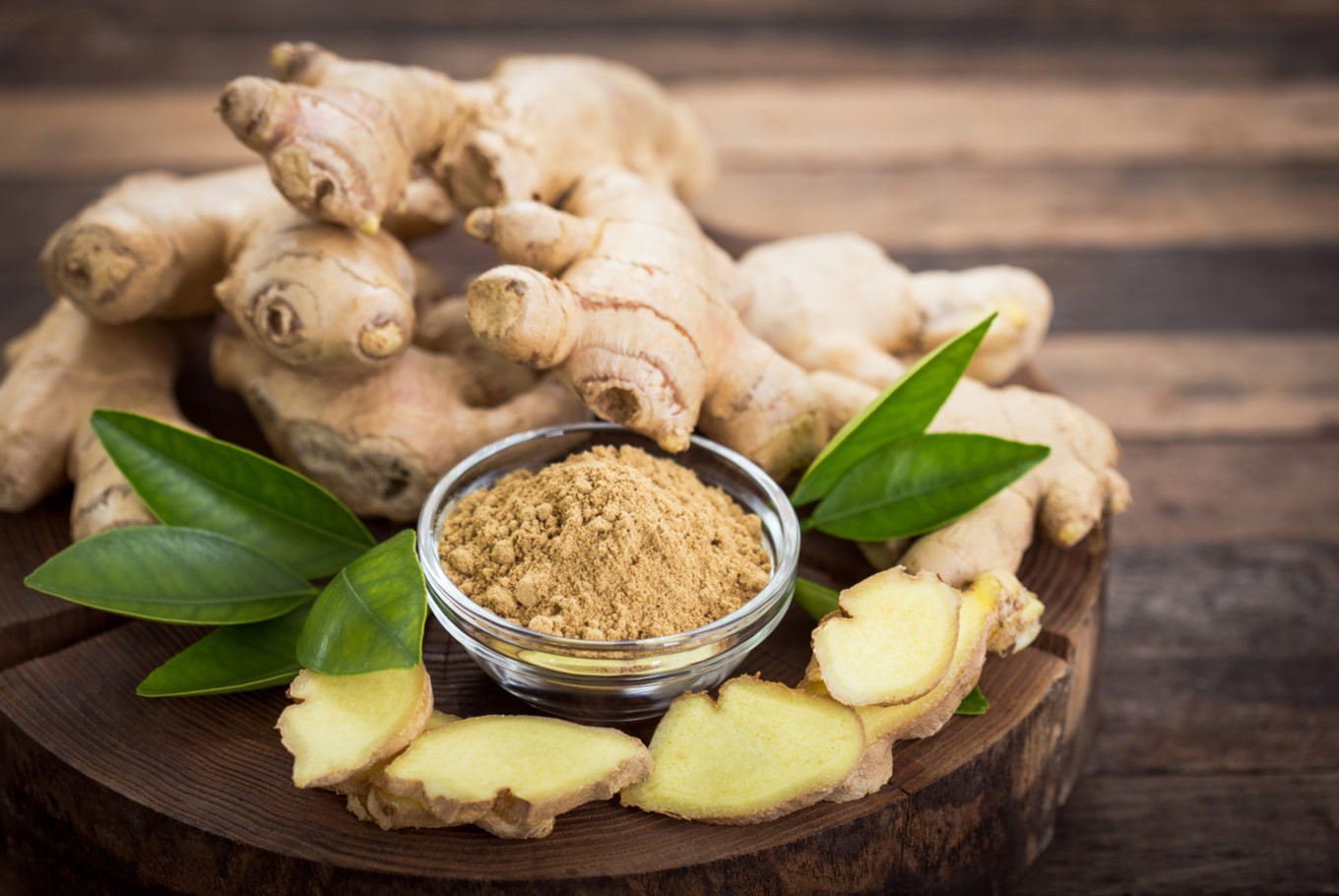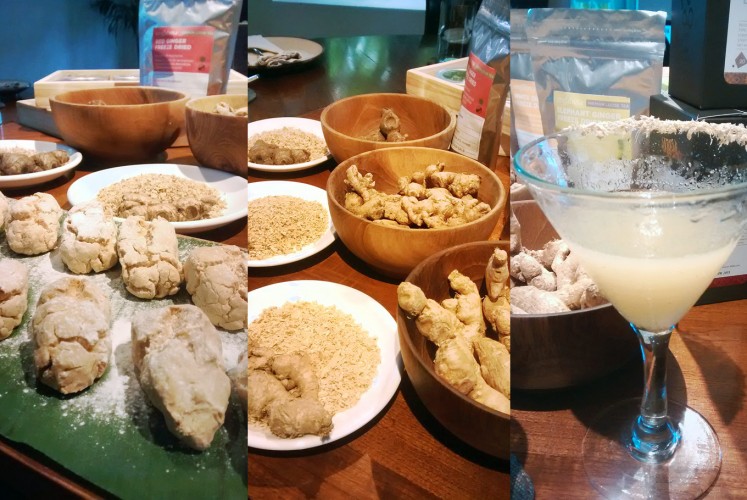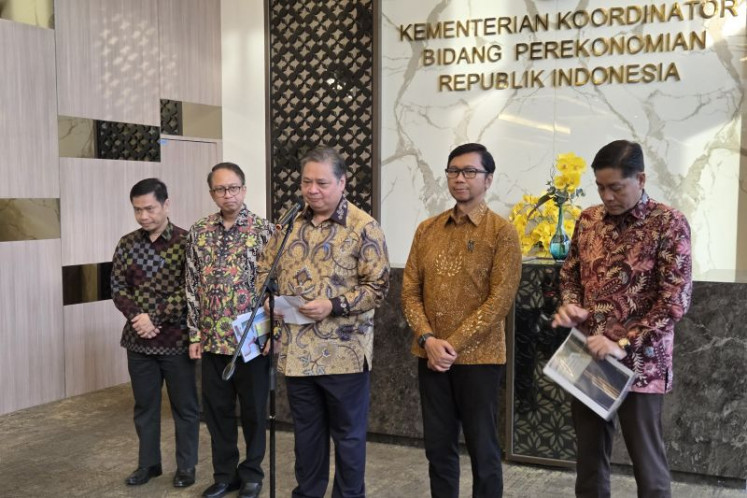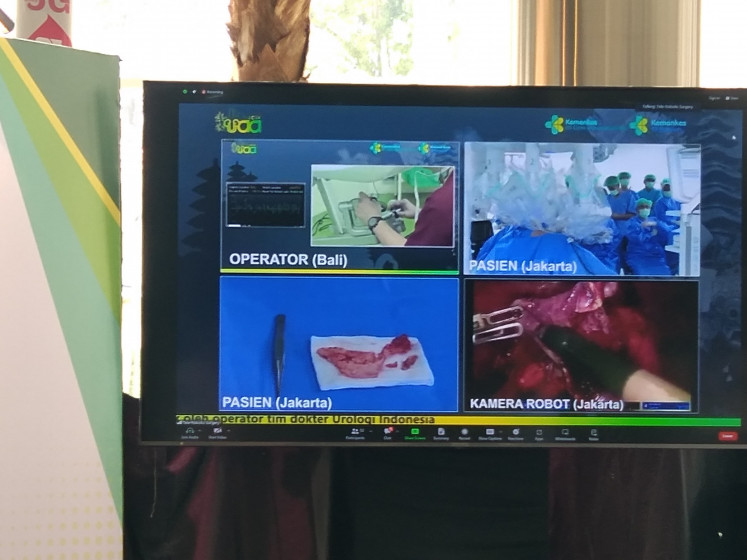Popular Reads
Top Results
Can't find what you're looking for?
View all search resultsPopular Reads
Top Results
Can't find what you're looking for?
View all search resultsGinger, essential spice we can't live without
Few people are aware that the word “ginger” is a derivative of singabera in Sanskrit, literally meaning horn-shaped.
Change text size
Gift Premium Articles
to Anyone
 Most Asian people use ginger for medication, seasoning and beauty care. (Shutterstock/File)
Most Asian people use ginger for medication, seasoning and beauty care. (Shutterstock/File)
F
ew people are aware that the word “ginger” is a derivative of singabera in Sanskrit, literally meaning horn-shaped.
“Singabera is believed to be the origin of the word ginger,” said Karina from Intrafood, a ginger processing company.
Most Asian people use ginger for medication, seasoning and beauty care. This rhizome, known for its hot taste and fragrant smell, is often used to cast away nausea or colds that are common when people are under the weather. The warmth produced by ginger’s essential oil is beneficial for one’s health as it fights the symptoms of flu, ensures smooth digestion and increases the body’s resistance to foreign pathogens.
“Indonesians usually carry ginger drinks when traveling to cold regions. Even if other countries have such drinks, ginger remains a favorite of Asians and especially Indonesians,” Karina said.
The active component of ginger is called gingerols, which is antibacterial and responsible for the warm sensation and comfortable feeling after sweating. Through processing, ginger can serve as an anti-inflammation herb, promote immunity, relieve menstrual pain and offer other health benefits.
Read also: LIPI researcher looks to curcumin, gold to treat cancer
“For therapy, ginger extracts can be obtained by drying ginger until there is not too much water left, so as to enhance its efficacy and enable it to be stored longer,” Karina said.
She believes that the best type of ginger in Indonesia is the one grown in southern Java, as far as Surakarta in Central Java. She said in spite of having ginger plantations maintained by her company, there had been a shortage of fresh ginger for herbal drink production, so there is a necessity to have a partnership with local farmers to ensure regular supply.
“The farmers know the right method of ginger cultivation and drying to produce good quality ginger,” she said.
Regarding the better quality of ginger in Java’s southern coasts, she referred to the landscape’s different air and soil conditions.
“There’s the tendency that when ginger is planted in soil that is prone to be dry, it will have a hotter taste.”
Indonesia has three ginger varieties: jahe gajah (white ginger), jahe emprit(Java ginger) and jahe merah (red ginger). Java ginger is smaller and hotter than white ginger.
“Java ginger is mostly used for cooking, by beating it and putting it into the dish being prepared,” said Lisa Virgiano, a culinary specialist. The larger white ginger is normally used as a spice after being blended, or for making ginger candy.

Surprisingly, as shown by Karina, red ginger has no better benefit than the other two, but the claim that it’s more efficacious has caused its price to soar and prompted some cunning farmers to play their tricks.
“They will harvest this ginger before it’s ripe enough as they are tempted by the high price,” revealed Karina, who uses white and Java ginger more for herbal and seasoning products under the brand Singabera.
Besides herbal medicine, ginger is also used for various kinds of Indonesian cooking, from light dishes, main and end courses, to beverages.
“The drinks aren’t just those to warm the body but also for herbal tea and even cocktails,” Lisa said.
Ginger also goes well with snacks like bagea palopo from South Sulawesi, which is made from sago with a sweet flavor, and salty panada from North Sulawesi, which is filled with shredded tuna. The drinks to accompany the food are herbal tea with milk, like masala (spice) tea generally served in South Asian countries, and ginger cocktail with rum, gin and lime.
Just like pairing red wine with red meat, the flavor of ginger can be enhanced when it is paired with savory snacks and certain drinks.
“The sweet milk tea is suited to bagea, while salty panada and satay maranggi [West Java beef satay] have the ginger cocktail to match. The taste of ginger will only be sensed after deeply savoring the snacks and drinks,” Lisa said.
Both Lisa and Karina share the view that ginger can be Indonesia’s promising commodity if properly processed. Karina referred to ginger seasoning and herbal tea as premium products.
“We receive overseas orders for ginger flavoring and supply herbal tea to supermarkets in Hong Kong and New Zealand,” said Karina, hoping that the products could be competitive globally in an attempt to support ginger farmers amid ginger exports.









